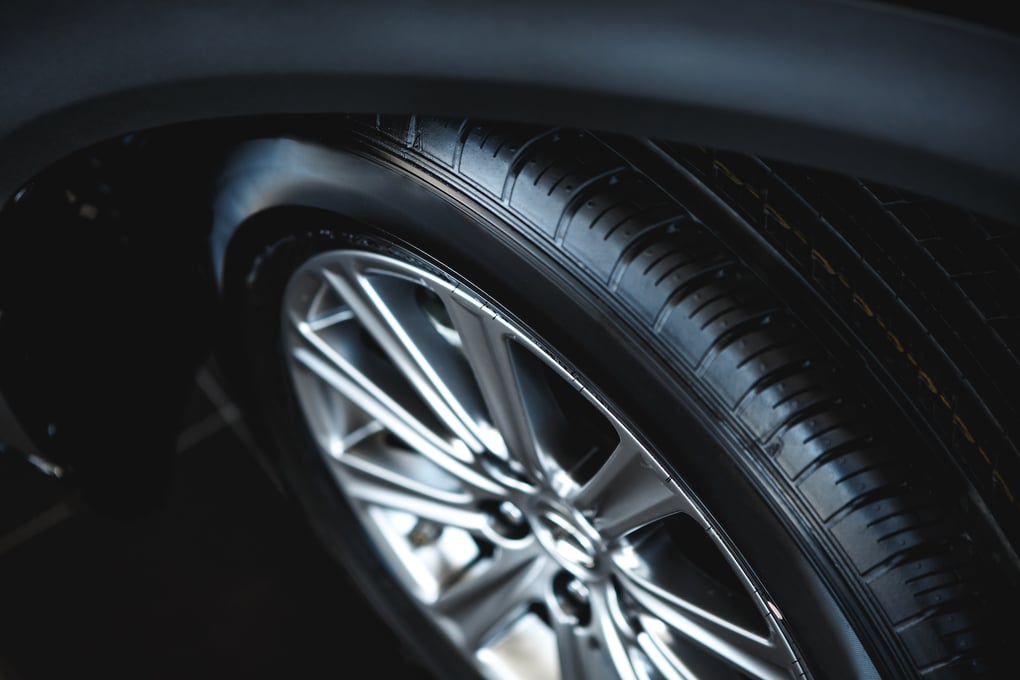On the WBAP Car Pro Show show last week, the Average Guy Question of the Week was based on tire age and when tires need to be replaced due to age, not mileage.
When you think of all the safety equipment on cars these days, people quickly think of airbags, emergency braking, anti-lock brakes, lane departure warning, etc. The truth is, in my opinion, your tires are the most important safety feature on your vehicle. It is often the most ignored as well. Today, I bring you some tips on how to keep your tires in good condition. After all, tires are all that separates you from the road.
Keep An Eye On Tire Pressures
This is one of the most critical things you can do to keep you and your family safe. Many people think you can tell if a tire is low just by looking, but the truth is you just cannot. It starts with a good tire gauge so you know the info is accurate. This assumes the vehicle you own doesn't have a diagnostic center that shows each tire's pressure. All newer vehicles have a light that comes on to tell you when the pressure is low, but often by the time the light comes on, the tire is very low.
We know that a low tire runs much hotter due to friction and this can lead to a blowout. It also hurts your fuel economy. An overinflated tire will lead to increased wear right in the middle of the tire, and because there is less tread on the road, handling is not as good and neither is braking.
Understand too, that changes in temperature can affect tire pressure. I am personally a fan of putting nitrogen in your tires; I put it in all my personal cars. NASCAR has been using it for years to keep the tire pressure constant on the track.
Tire Rotation Is Critical
Too often people don't spend the money needed to get their tires rotated. This should be done every 5000 miles. What people often don't realize is rotating tires will extend the life of your tires, sometimes you can double the tire life just by being diligent with the 5000 mile rotation. Rotation will help keep tread wear even, especially on front-wheel drive cars. I would use a dealership to do this, since some vehicles have different rules of rotating. Some vehicles have to be cross rotated. Also, most dealerships will do a free brake inspection for you and give you the amount of brake wear since they've already got the wheels off anyway.
Don't Forget The Front End Alignment
Again, this will extend the life of your tires, and you often can't tell by driving if your front end is out of alignment. Potholes and curbs will knock a car out of alignment in a hurry. Often, by the time you figure out your car needs an alignment, you've eaten through the tires. The safe mileage to have an alignment checked is no more than 25,000 miles unless you hit a curb or pothole that you really feel.
Check Your Tread Depth
This is something you can easily do yourself. You can use either a quarter or a penny and it is quick and easy to do. Insert a quarter into a tread groove with the top of Washington's head facing down. If the top of George's head does not show, your tires have at least 4/32" of tread and are OK. If you can see above the top of Washington's head, it is time to get some new tires. Take measurements in three locations across the tire's tread: Check the outside edge, right in the center, and also on the inside edge.
The penny test is done in the same way, except that if you can see above the top of Abe's head, your tires have less than 2/32" of tread, which is below the legal minimum in most states, and should set off all sorts of warnings. Tires worn to this level could also have visible wear, like the steel cords showing from side to side across two or more tread segments. Tires this worn are a true safety issue and you are at risk.
A Few Other Thoughts
- Besides making your car look good, a good tire dressing is smart, especially if you live in an area that gets a lot of sun and heat. Tire dressing is great for keeping your tires from cracking due to age.
- If you feel your front end shaking or shimmying, you may need a balance. Weights are put on your wheels to make them perfectly balanced, but those hard potholes can knock the weights off and cause your vehicle to driven differently. This is not something you need to do as regular maintenance, but only if you feel your car is driving differently. Generally, you'll be able to tell from a vibration in your steering wheel.
- Use the tire pressure recommended by the automaker, not what it says on the side of the tire. One particular size and brand of tire may be used on many different vehicles. Almost always, if you look inside the driver's door, there are stated air pressures. The front may be different from the rear tires, but whatever the case, use the pressures that are on the car.
- Tire age is important, so know how old your tires are. We know that tires get substantially weaker after they are six years old, regardless of mileage. On the side of the tire, you'll see DOT (Department of Transportation) and a four-digit number. This number represents the date the tire was made. For instance, if you see DOT 1916, the tire was produced in the 19th week of 2016. When buying new tires, ask about age and check it. Sometimes tires, especially odd sized ones, can set on the shelf for many years.
In Conclusion
Tire safety is crucial and too often ignored. As stated earlier, your tires are the connection to the road and affect safety, braking, handling, steering, and ride quality.
Take the time and do all the things I discussed above. Not only will you be safer and enjoy your time behind the wheel, but proper steps will help you get the most miles out of your tires, ultimately saving you money.
Photo Credit: Kuznechik/Shutterstock.com.


